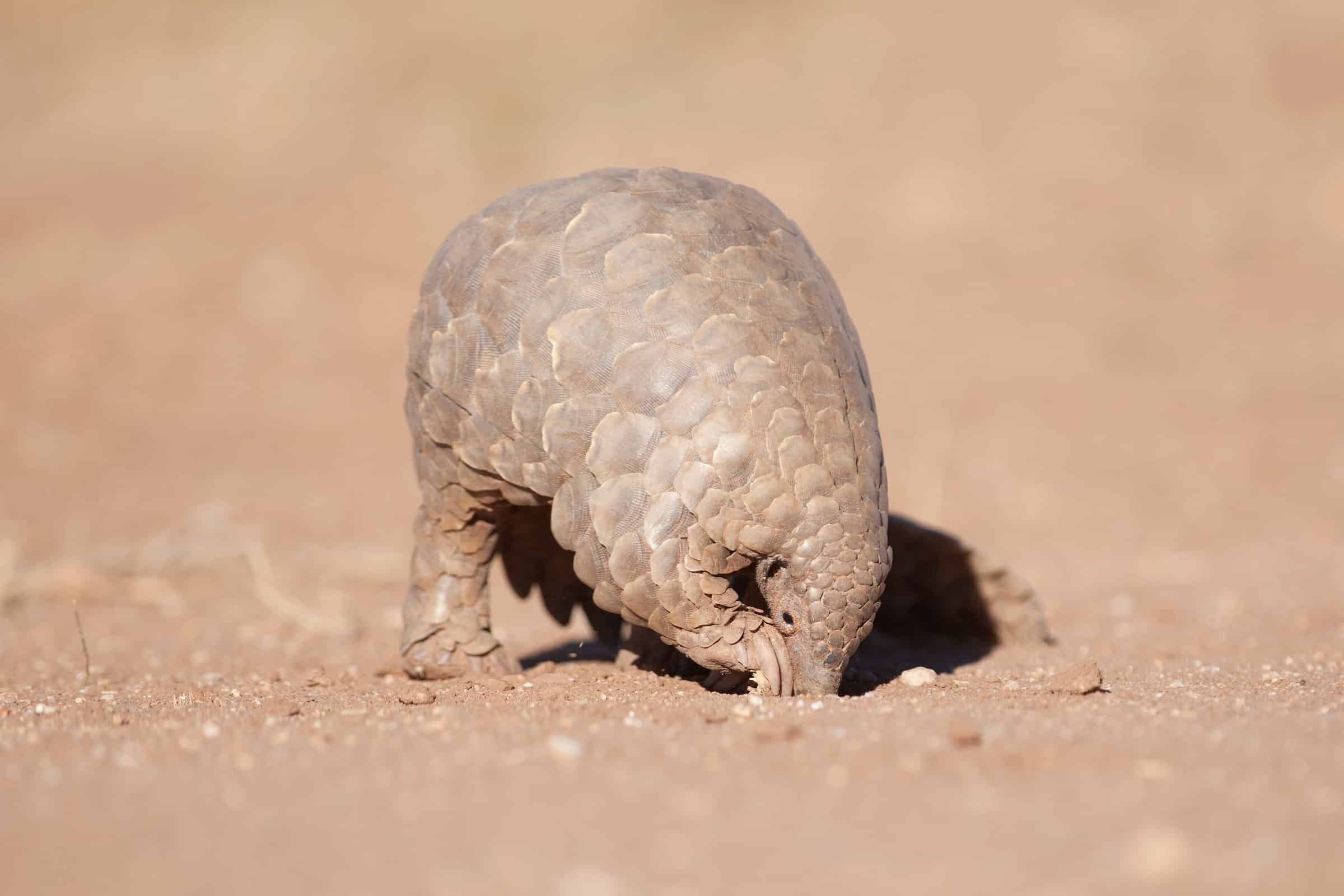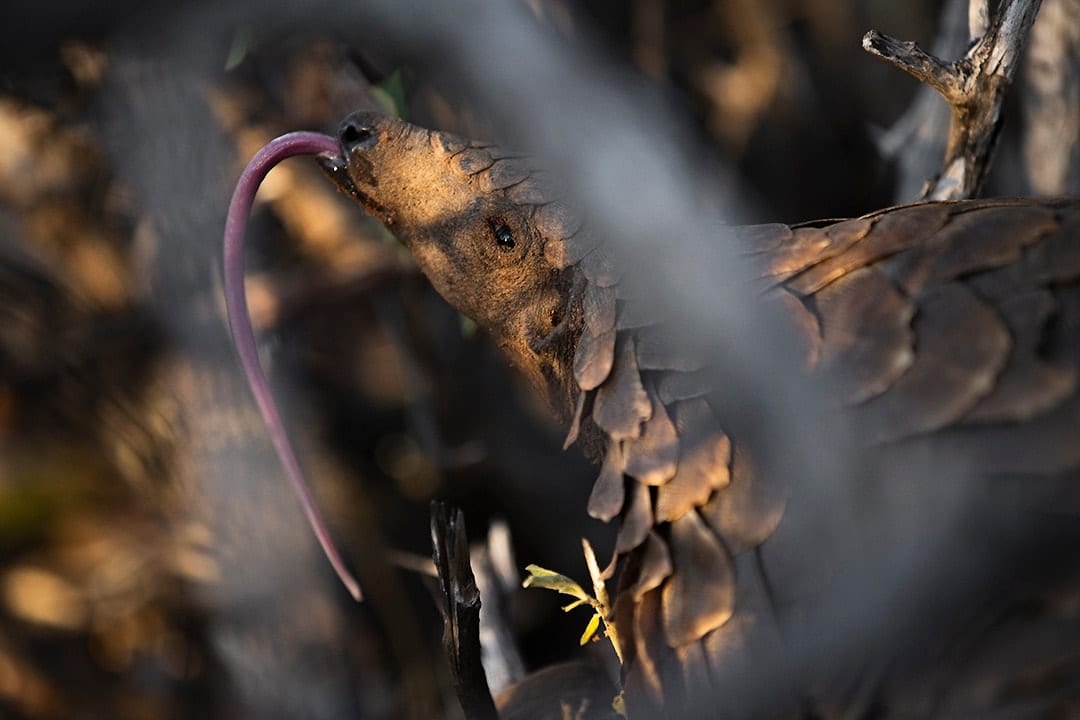To us, a pangolin is a gentle critter with a curious collection of features. But for an ant or termite, a pangolin is a gigantic, plundering threat.
A diet made up exclusively of ants and termites has led to some remarkable pangolin adaptations. Pangolins use their shovel-like claws to tear through insect mounds and wield their serpentine tongues through narrow passageways, catching any succulent insect in their path. An entire insect colony can fall to one hungry pangolin.

The long snout and keen nose of a pangolin lead it to food sources. Small, conical heads allow them to probe into insect mounds as their tongues—which can reach as long as 16 inches—dive sharply into ant tunnels and termite chambers. Pangolin saliva has compounds that make it exceptionally sticky, ensuring insects and their larvae cannot escape and can be swallowed whole.

With tongues longer than their entire body length, pangolins have a unique internal system to store their tongues deep in their chest cavity, specifically at the last rib and pelvis. Since pangolins have no teeth, they ingest small rocks—or gastroliths—to create a gizzard that grinds up ants and termites in their stomachs.
With these remarkable adaptations, pangolins can devour tens of thousands of insects in a single day.

